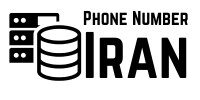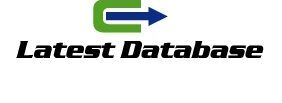A call to action is undoubtedly one of the most powerful marketing tools available to businesses and organizations.
It is an essential element in any effective special lead marketing strategy, as it can help you increase conversions, drive sales, and boost brand awareness.
Moreover, if you use personalized action phrases, they can be up to 202% more effective.
But unfortunately, many companies and marketers don’t have a CTA strategy for their campaigns and business.
In this guide, we discuss some call to action phrases examples that you can use in your marketing to increase conversions and ROI.
What Is a Call to Action in Marketing?
A call to action is an important component in marketing that prompts the audience to take a specific action. It provides instruction intended to provoke an immediate response. It usually the informal style serves to strengthen includes a verb, such as “buy,” “subscribe,” “register,” or “download.”
Calls to action are common in both digital and traditional advertising forms like print, television, and radio. However, they’re most commonly recognized and utilized in online marketing through websites, emails, social media, and digital advertisements.
The Role of a Call to Action
The primary role of a call to action is to convert potential customers into leads or customers by guiding them through the sales funnel.
Here are the core functions of an effective CTA:
- Encourage Immediate Action: A CTA reduces hesitation and encourages action by explicitly telling the audience what to do next. For instance, “Sign Up Now” prompts users to register.
- Provide Clear Instructions: CTAs offer clarity by providing clear instructions on what the user should do next. This is especially important buy lead in a digital environment loaded with information that can easily distract users.
- Enhance the User Experience: A well-placed call to action can improve the overall user experience by providing a seamless pathway to follow. For example, after reading an article, a CTA might guide the reader to “Read Related Articles” or “Share this Post.”
- Measure Success: Calls to action are measurable. You can track how many users clicked on a CTA. This helps you understand the effectiveness of a marketing campaign and make necessary adjustments.
Soft Call to Action vs. Hard Call to Action
CTAs can be categorized into two main types: soft CTAs and hard CTAs, each serving different purposes, depending on which stage a user is of the buyer’s journey.
A soft CTA is less direct and often used to build relationships and engage the audience without pushing for an immediate sale.
Examples include:
- Learn More
- Find Out How
- Discover Our Services
- Read Other Related Articles
Soft CTAs are typically used in the awareness and consideration stages of the buyer’s journey.
On the other hand, a hard call to action is more direct and assertive. It’s aimed at driving immediate action that leads to conversions.
Examples include:
- Buy Now
- Sign Up Today
- Register Now
- Get Started
Hard CTAs are typically used in the decision and action stages of the buyer’s journey.
That said, strategically implementing effective calls to action allows businesses to significantly improve their marketing outcomes and achieve their objectives more efficiently.
How Many Words Should a Call to Action Be?
When it comes to word count, the sweet spot for calls to action is typically two to five words. This ensures a perfect balance of clear instructions and conciseness. This word count makes it more likely to capture the audience’s attention and prompt immediate action.






